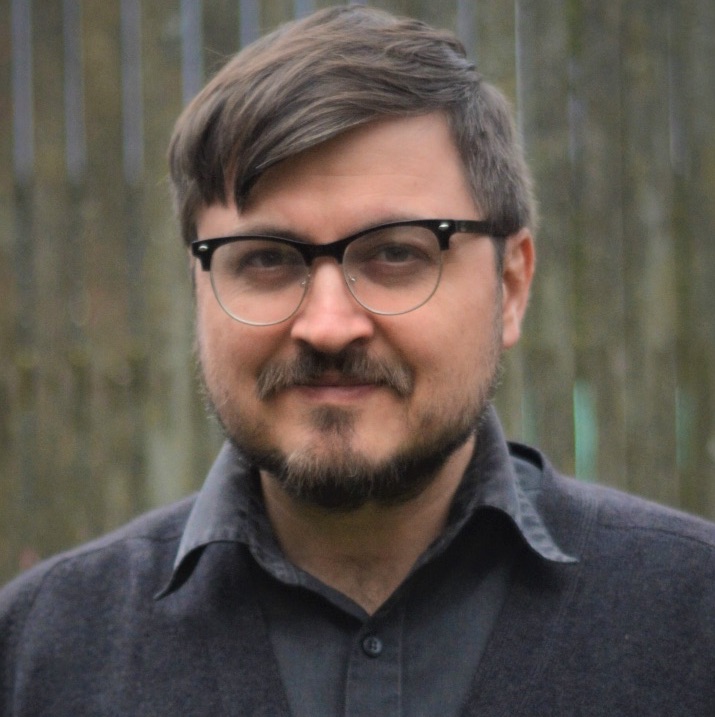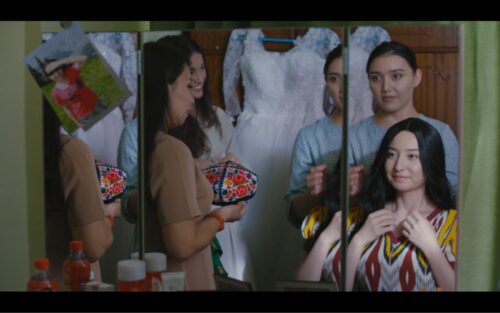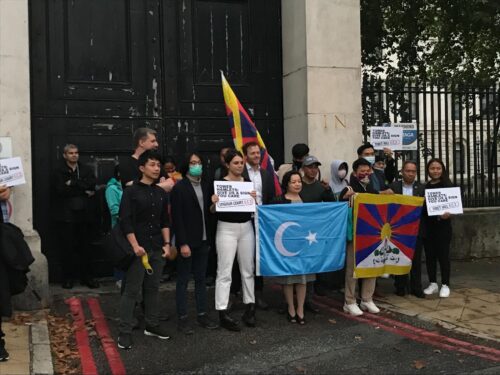
For nearly a decade, Uyghurs in China have been living in an extreme surveillance state. In the last few weeks, they have not been able to join the demonstrations in China against excessive COVID surveillance and lockdown policies, despite being the worst-affected group, and the victims of the Ürümchi fire that sparked the protests.
On November 24, 2022, an electrical fire engulfed the upper stories of an apartment building in a Uyghur-majority neighborhood in Ürümchi, the capital city of the Xinjiang region. Within hours, I received messages from eyewitnesses in the same apartment complex — people I have known since 2014, when I lived a 15-minute walk away from the site of the fire — who told me that they had been forced to watch and listen in horror as their neighbors burned alive. They couldn’t leave their own apartments due to quarantine restrictions, which only permitted them to leave their apartments for brief periods for daily COVID testing. The locked doors and blocked escape routes that my contacts experienced in their own buildings were also a factor in why their neighbors were not able to escape the blaze.
The state enforcement of quarantine measures was also why it took nearly three hours for emergency workers to get their equipment close enough — past barricades and parked cars — to put out the fire. Far too late for at least 10 residents, who state authorities admitted died in the fire. As Serafet Muhammed Ali, a family member of five of those who died, put it in an interview with the BBC, “My beloved ones are gone. Nobody helped.” Paradoxically, the COVID restrictions were also why the neighbors were there to record their screams in Chinese asking the government to open the doors. And why those videos went viral.

Within hours, Han residents in other parts of the city (and across the country) defied COVID restrictions in their own communities and began to march in the streets, demanding an end to the lockdown. This was a remarkably rare event. Not since July 5, 2009, have there been mass demonstrations in Ürümchi.
There were some important differences between the two protests, as well as some important similarities. In both cases, the protests were sparked by the death of Uyghur citizens and viral videos that portrayed in graphic detail how unresponsive the state was in protecting Uyghur lives. In both cases, the marchers carried Chinese flags and demanded that their civil liberties and their lives be protected. The major difference this time was that Uyghurs were nearly completely absent in the marches. Unlike the marches on July 5, 2009, when tens of thousands of Uyghurs marched in protest of the mob lynching of Uyghur workers in Guangdong Province, this time, the only marchers were Han. Many appeared to be from the Bingtuan, or People’s Construction and Production Corps — a system of region-wide militarized farming colonies that form the core of the settler project in Xinjiang. As the scholar Tom Cliff has shown, members of this population view themselves as “constructors” of the nation. Over the past five years, many of them have been pulled into grassroots surveillance work responsible for “reeducating” their Muslim neighbors and enforcing the “show no mercy” campaign to eradicate “foreign” Islam.
Too many hats to protest
While importantly, Uyghurs I have communicated with in Ürümchi do support their Han neighbors in the anti-COVID protests, they do not necessarily feel a fuller sense of solidarity with them. Instead, their ongoing differential treatment as terrorists-in-waiting, and the way their Han neighbors have supported it, remains a primary way they view the protest.

As one Uyghur resident put it, “we wear too many hats now, so we just have to stay home.” The hats she was referring to were the tall hats placed on the heads of so-called counterrevolutionaries during Maoist struggle sessions. Uyghurs today feel like they are always wearing terrorist and separatist hats. If they were to hold up blank pieces of paper in the streets, those words would already be written there in invisible ink. “As Uyghurs, we cannot speak up anymore because we want to live,” another Uyghur citizen from Ürümchi put it. Instead, there was nothing they could do but “hope Han people can continue” to protest, and that this eventually would lead to a “fight for everybody’s freedom.”
But in the protests that swept across China and then around the world in the Asian diaspora, the ethnicity of those who died in the fire was conveniently forgotten. In a manner that was similar to the often-forgotten Kurdish origins of recent protests in Iran, for a day, the suffering of Uyghurs came to stand for the suffering of all Chinese. And to a certain extent, the Han settler vanguard who did protest in Ürümchi have come to stand as the “real” victims.
This elision means that the forced disappearance of the parents of some of the children who died went unnoticed by most protesters. Similarly, hundreds of deaths through medicalized neglect due to mass internment and, more recently, draconian COVID restrictions in Uyghur communities have also been unacknowledged. It was only when Uyghur deaths were counted as Han deaths that they seemed to have any effect at all.
This is perhaps why, according to a young woman, a family member of Uyghur residents who live in the apartment complex, that a 2007 poem titled “Ürümchi” by exiled poet Tahir Hamut had become so poignant. Tahir, who himself lost dozens of family members and friends to the camps, wrote the poem after his own release from prison but before the mass violence of 2009 and the decade of oppression that followed. Yet the mood was already true of what was to come.
Ürümchi
by Tahir Hamut
A city.
Inside the dead ice
Its significance removed
By a cold wind that remains from long ago.
Soaked to the bone
A reflection of stars on the water; I saw sobbing in broad daylight
Where steam rose from underground.
A city —
A repeated, chaotic story,
But, I do not exist in it.
Even
On a sunny day long years ago,
When a frail girl disappeared from this city,
Fearing love, she never wanted to understand
The Uyghur words “I love you!”
A city,
As exhausted as I am;
A city,
Which abandoned the spring and autumn;
A city,
Fading away in the fog.
March 2007, Ürümchi
Translated by Darren Byler and Anonymous (Uyghur text available here)
When she shared the poem with me, the young woman said, “This poet says everything for us now.”
While Uyghurs around the world are happy that the Chinese people are standing up to the state, it is important to remember that Turkic Muslims in China are not able to protest in the same ways. That for them, the possibility of public protest within China has been largely eliminated.
At the same time, outside of China, Uyghur youth who previously had been too afraid to protest are now joining their fellow international students from China in denouncing what has become of their shared homelands. And, increasingly, the Han diaspora is creating space for Uyghurs, forcefully denouncing the camp system that was created in the name of their security. An emergent cross-ethnic political consciousness is forming, and that, more than anything, is giving Uyghurs everywhere some reason to hope.






